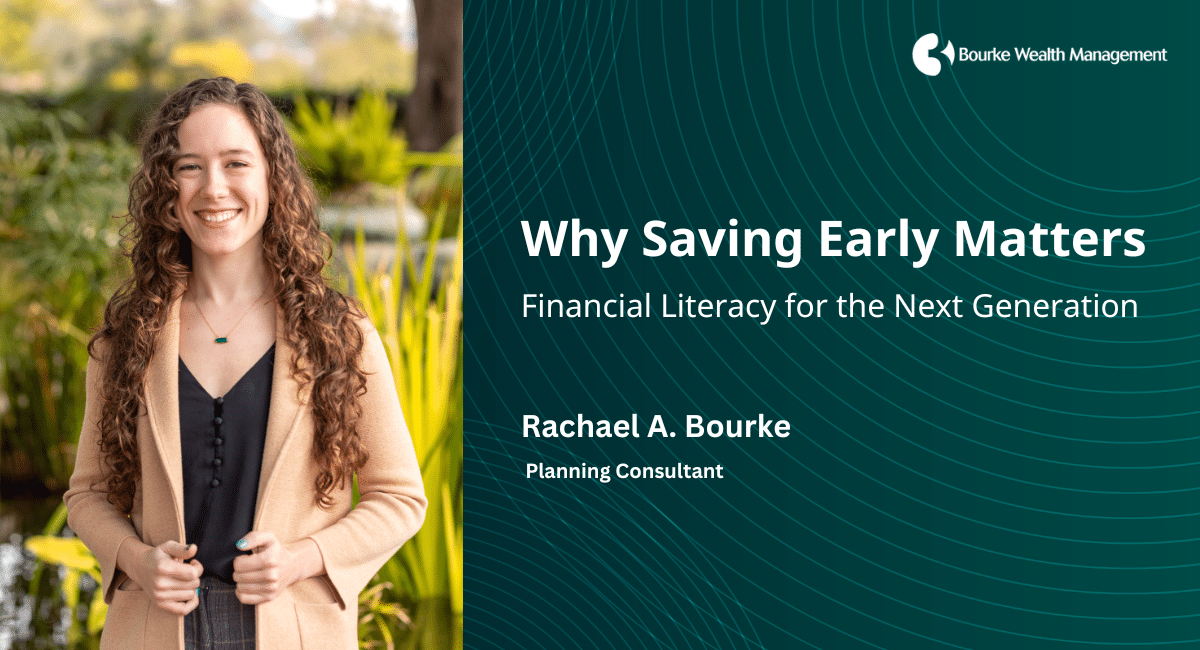As cost of living continues to rise while wages lag behind (Business Insider), it’s becoming increasingly important for young people to start saving early to secure their financial future. Unfortunately, financial literacy is often not passed down to younger generations.
Here are three practical ways to help your family members understand the importance of saving and take steps toward financial security.
Small Savings, Big Impact
When my sister and I were under 10 years old, my parents made us a deal: if we skipped buying soda when we went out to eat, they’d give us the cash instead.
Not only did this cut down our sugar intake, it also taught us an important financial lesson. My dad loves to recount the moment I counted the cash I had saved over a few months and exclaimed, “Dad, soda costs a lot!”
This simple practice highlighted a powerful truth: small, everyday savings add up over time.
The Magic of Compound Interest
Ask a young person: “Would you rather have $1 million today or one penny that doubles every day for a month?”
Many people would likely take the $1 million, but here’s the kicker:
Doubling a penny every day for a month results in $5,368,709.12!
To make this concept tangible, grab a calculator. Start with 0.01 (one penny) and multiply it by 2. Continue doubling the result 29 times, letting them help you count. The final number is astonishing and nearly unbelievable: over $5.3 million.
This simple exercise demonstrates the power of compound interest. By saving and investing small amounts, even modest contributions can snowball into substantial wealth over time.
Here is a short, helpful video that illustrates this concept: https://www.youtube.com/watch?v=dlJgEFPCW5U
Investing Early: The Roth IRA Example
Let’s look at Annie. As a high school senior, Annie worked part-time at a local movie theatre, earning $1,000 a month after taxes. Following her uncle’s advice, she put $500 monthly into a Roth IRA and invested in an index fund tracking the S&P 500.
After one year, she stopped working to focus on college, leaving $6,000 in the account with dividends reinvesting.
Fast forward to age 67 when Annie was nearing retirement. She checked on this account from her youth and was astonished to find that it had grown to $300,631.40 (based on S&P 500 returns from 1974 to 2024). To top it off, because the funds were investing in a Roth IRA, she had the freedom to withdraw the funds completely tax free.
Throughout her working years, Annie also followed the “Pay Yourself First” rule. Every paycheck, she had 15% of her income deposited into a retirement savings account (per a recommendation from Fidelity Investments). By starting early and paying herself first, Annie set herself up for a comfortable retirement.
While markets are volatile and past performance doesn’t guarantee future returns, this story illustrates the power of starting young and letting investments grow. Annie’s “set it and forget it” approach allowed her to turn small contributions into a fruitful retirement.
Key Takeaways
- Start Small: Even skipping small purchases can lead to big savings over time.
- Think Long-Term: Compound interest works wonders with time.
- Invest Early and Save Regularly: Modest investments over time can snowball into significant wealth.
Encouraging young people to develop healthy financial habits early will set them on a path toward greater financial security in the future.
Sources:
Business Insider
Fidelity
S&P 500 Calculator
Compound Interest Video



